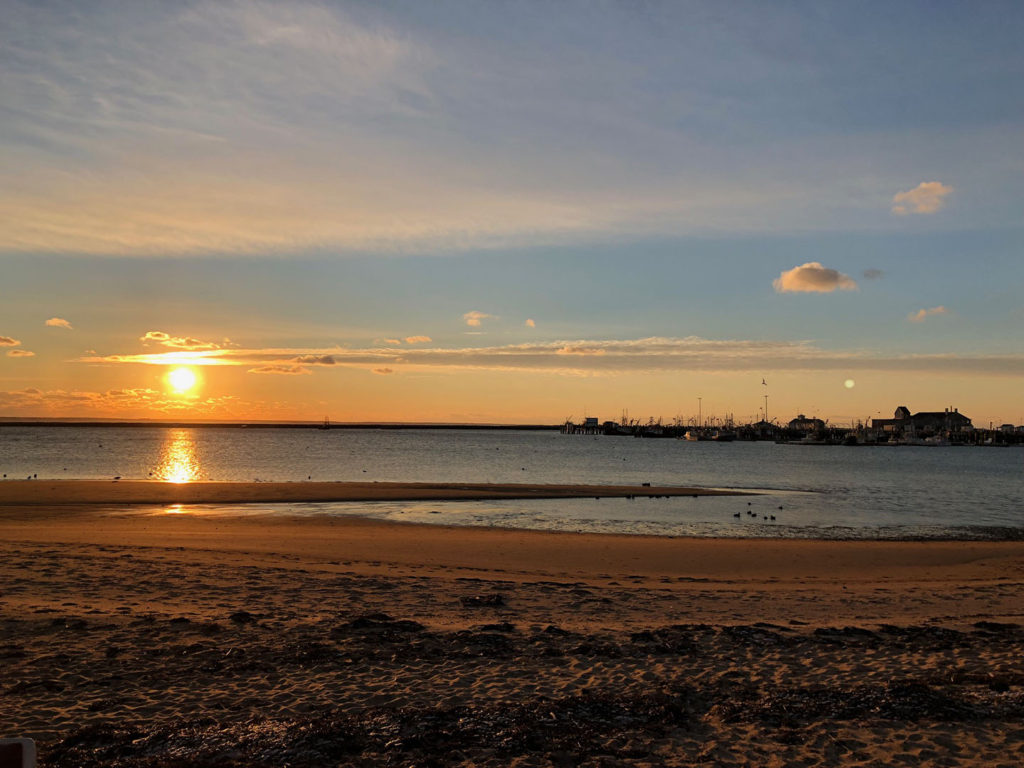
P-Town: The Nuts and Bolts
I recently wrote two travel pieces about Provincetown, Mass. for Travel Awaits, about the nuts and bolts of a visit to P-town in winter and in summer, but I did not write about my pilgrimages over a 50-year span to that storied haven for the “the badly behaved” at the tip of Cape Cod…or about my passion for the place.
Here are my articles on Travel Awaits:
Provincetown: Where to Stay, Eat, and Play
Provincetown: A Perfect Winter Weekend Getaway
And here’s my take on P-town devoid of restaurant, hotel, and other site descriptions:
A Haven for the Badly Behaved
“…it is at the very end of the Cape, which unfurls like a genie’s shoe from the coastline of Massachusetts; [Provincetown] follows the curve of a long, lazy spiral and looks not out to sea but in….”
Michael Cunningham, novelist and screenwriter; Land’s End: A Walk in Provincetown, 2002
Like a homing pigeon, I have made the trek to Provincetown (or P-town, as it is known) several times a year for more than 50 years. I traveled throughout my geographically and spiritually distinct past lives in Boston, western Massachusetts, western Connecticut, New York City, and Jersey City.
Each journey over the past decade has taken about six hours on a good day (each way) and many more on bad ones during the summer or on holidays. But getting to P-town is always painful (I need to learn again and again that Connecticut is a mind-numbingly LONG state). However, the pain of the journey is greater going home because you don’t have P-town to look forward to.
“One of its [Provincetown’s] charms is the fact that those who go there have made some effort to do so.”
Michael Cunningham, Land’s End: A Walk in Provincetown, 2002
Moonscape Dunes
In summer we battle the crowds going over the Sagamore bridge and are thrilled to finally be on the Cape; we then try not to implode when the highway narrows down to two lanes. At last we are driving through the Province Lands dunes just outside of P-town, and the terrain begins to look otherworldly, almost like a moonscape. Passengers in my car (from friends and cousins and a car-sick mutt in the early days to my husband and daughter and a quaking purebred years later) all breathe a sigh of relief as we near the turnoff and feel our proximity to that quirky and storied place.
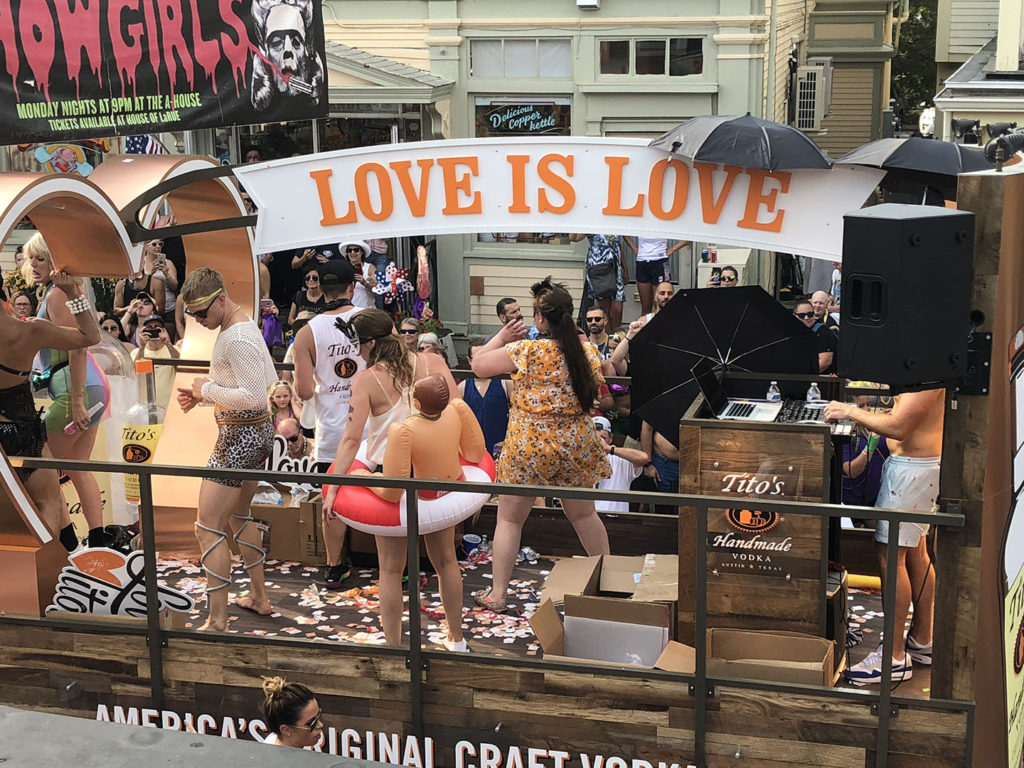
“Provincetown, a wonderland of tolerance, had a longtime tradition of accepting artists, writers, the badly behaved, the gay, the different. It was paradise.”
Anthony Bourdain, Parts Unknown tv series, about Provincetown in the 1970s
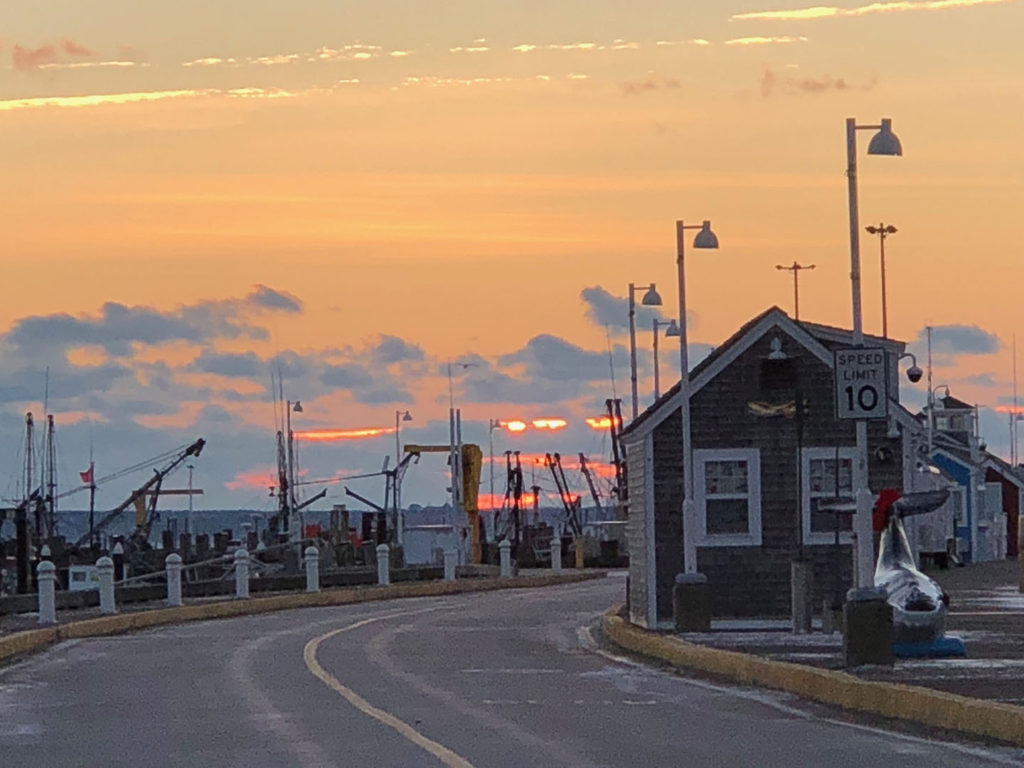
Marine Light
For me, the vibe of P-town has remained steady through the years. The town, just three miles long and slightly more than two blocks wide, reminds me of a one-horse town in the old West, if Commercial Street were lined with saloons and doss houses.
That P-town vibe varies in intensity in different seasons, but what envelops me at any time of the year is the clear and breathtaking marine light that surrounds the boats in the harbor, the brightly-colored houses lining the few streets of town, and the dune-covered beaches. I always look forward to wandering Commercial Street early in the morning, stopping to gaze out at the bay and drinking coffee and chatting with dog walkers.
Preferred by Pilgrims
In some ways, this spit of land has not changed for 400 years. In fact, in 2020 the town celebrates the 400th anniversary of the historic arrival of the Pilgrims in 1620; most P-towners know that the Mayflower landed here before it made its way to Plymouth. In the 17th century the town became a center for seafarers and fisherman, and their carousing led the people to dub the port “Helltown.” Provincetown was incorporated in 1720, and whaling soon became its major industry. Crews from Cape Verde and the Azores made their homes in town—and the Portuguese culture thrived until the real estate boom of the 21st century forced their descendants to move to other towns on Cape Cod or farther.
Tragedy Strikes
Artists and writers arrived in the 19th century to find freedom, beauty, and cheap places to work. Hangers on, eccentrics, rebels, and tourists followed. In the 1960s hippies and other free spirits flocked to the town, and by the mid-70s it was a welcome vacation destination for the gay community. No one who has lived in P-town in the years that followed will forget the horror and devastation that AIDs and HIV wrought on the gay population in town, when some 10% of the town’s year-round population died. A memorial was erected in 2017 near the Pilgrim monument in their memory. Today the town is gay and straight and young and old, but if you’ve arrived relatively recently and seek to stay, you must be able to afford living in the more and more expensive older homes lining Commercial Street or the similarly pricey homes and apartments further inland.
The Seasons
Some say that the best time to visit P-town is in the spring or fall, when shops and restaurants are open but there is room to breathe on the streets; the light still envelops the town, but also, as Cunningham wrote, “May and June in Provincetown tend to mists and fogs, and the town is as greenly muted as a village in the Scottish highlands.”
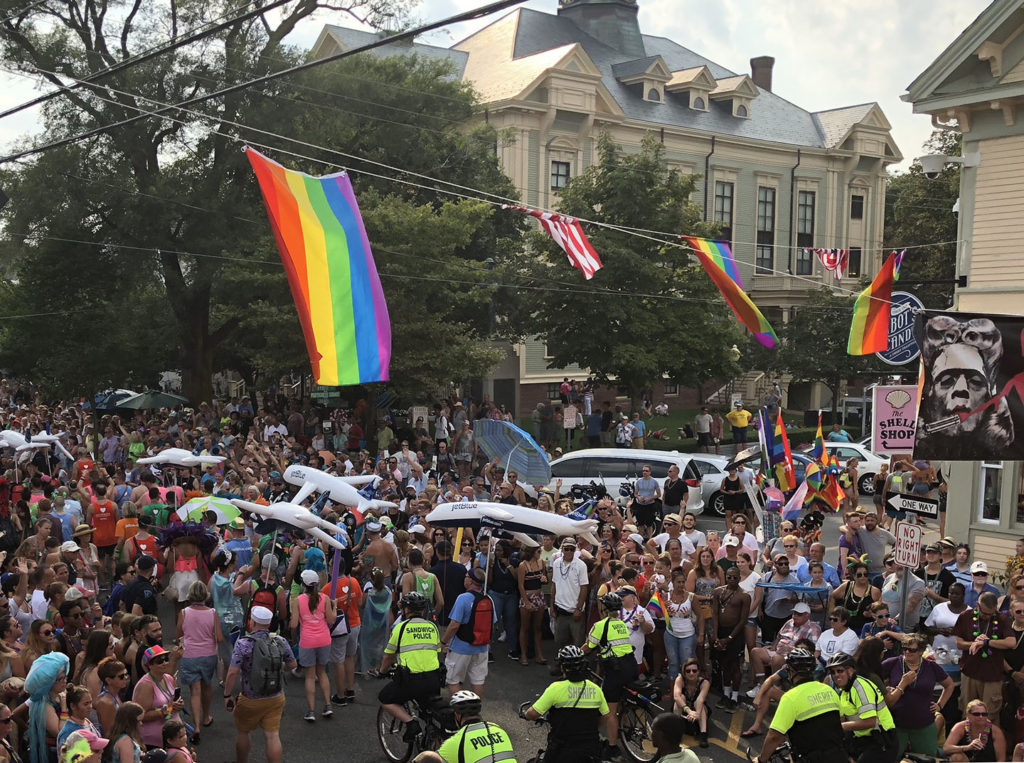
Summer is high season in town. Crowds gather on Commercial Street at dusk: from the year-rounders to day-trippers, from wildly-bedecked cross-dressers to gay and straight families, from bachelorette partiers to wandering bicyclers and groups of tourists. In summer the borders between people seem to disappear as the sky melts into the sea, leaving a slow-moving mass of humanity.
Primeval Innocence
When summer ends, the crowds begin to thin. An intrepid group—which included the late writer Norman Mailer—stayed year-round. It was here that Mailer wrote some or all of his 30 books, as well as his perceptions of the changing seasons in his adopted town.
“Perhaps this is why Provincetown is so beautiful. Conceived at night (for one would swear it was created in the course of one dark storm) its sand flats still glistened in the dawn with the moist primeval innocence of land exposing itself to the sun for the first time…but then the summer ended and most of the painters left, and the long dingy undergarment of the gray New England winter, gray as the spirit of my mood, came down to visit.”
Norman Mailer, Tough Guys Don’t Dance, 1984
Haunted Winters
I have clear memories of P-town at the height of the winter, when the town is often battered by ferocious winds and storms. Nature seems more elemental because the town is so unprotected, but in fact it is often warmer here than on the mainland. On quieter winter evenings the town seems haunted, with brooding silence and empty spaces, especially near the old Winthrop Street cemetery in town (not to mention the tiny 19th century smallpox cemetery, slowly sinking into the wilderness just north of route 6E).
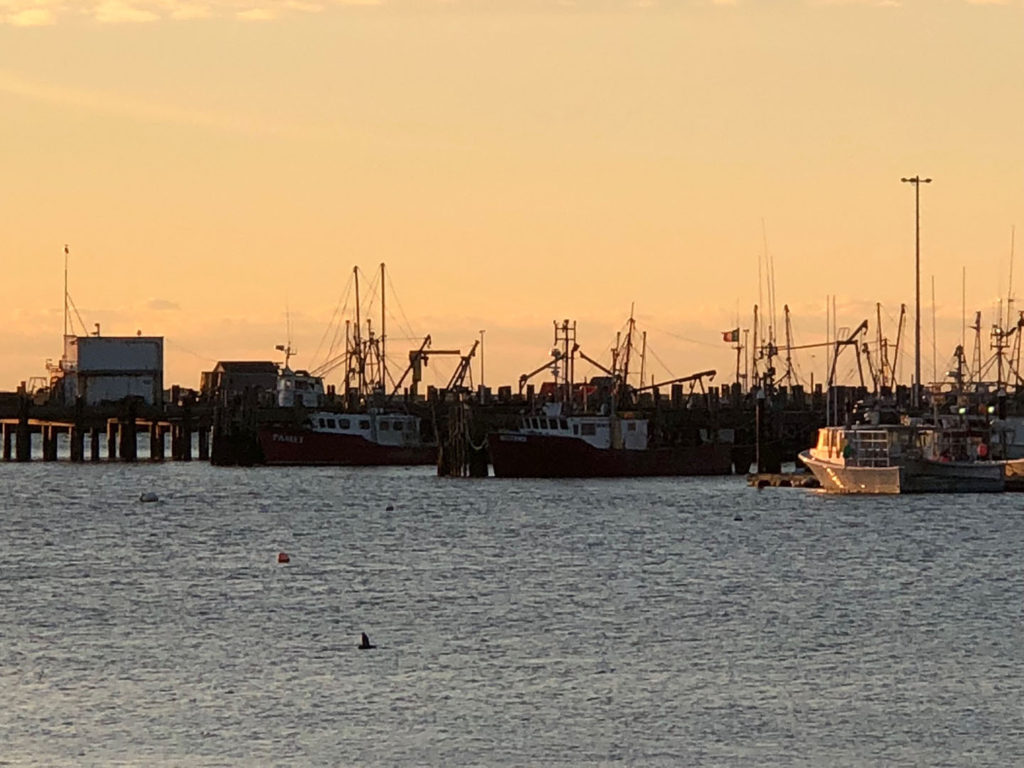
In the winter you sometimes feel as if you are seeing the town through the eyes of 18th century settlers heading home on the dark streets. My own history includes dropping by the fairyland of Napi’s restaurant at Christmas time, with its blazing fireplaces and colorful lights festooning the artwork made by P-town artists. You greet people in the street more often in the winter; you share a loyalty to the town in what some think of as the worst of climes.
But of course P-town is more than houses, restaurants, shops, and hotels, as charming as they are. It is more than the celebrations and parties in the summer and more than the artist studios and writing nooks populated by people who find quiet and beauty in the town in the off season. Being there is being part of the nature surrounding it, which is never more than a stroll or a bike ride away. That beauty has inspired generations of artists and writers.
City of Sand
“[Provincetown] is a filmy sliver of land lying flat on the ocean, a mere reflection of a sand-bar on the haze above.”
Henry David Thoreau, Cape Cod, 1865
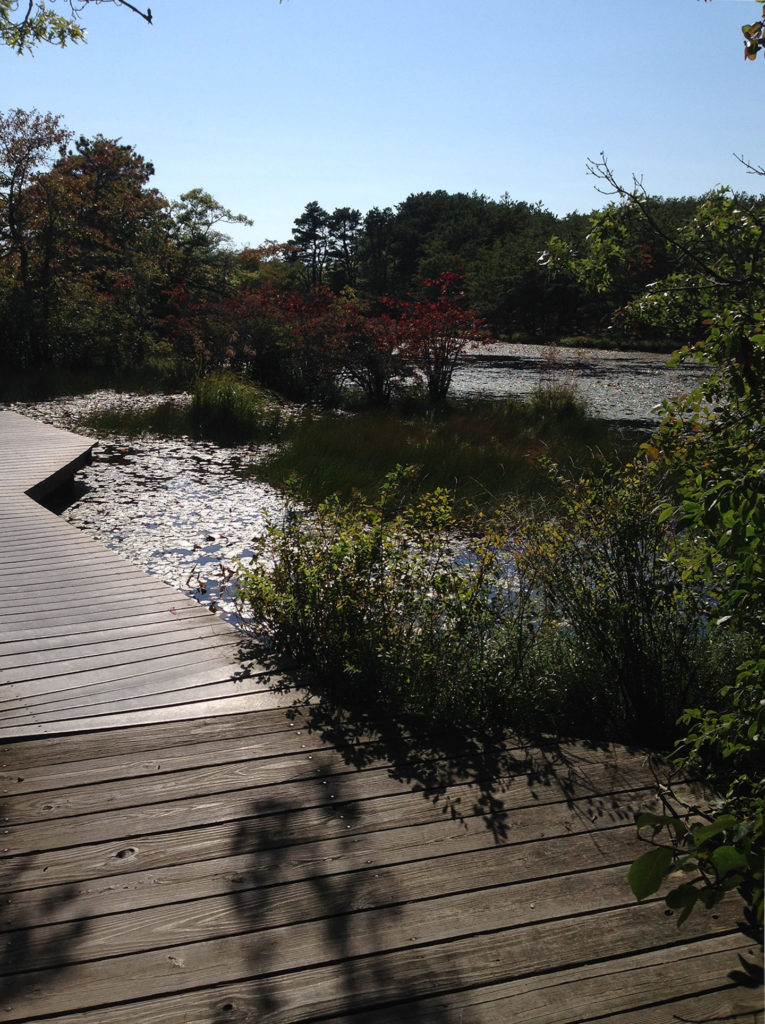
Perhaps one thing that has captured the imagination of those who have lived and worked here is that the existence of this little spit of land is so tenuous; it is basically a city of sand, one that could disappear with storms, erosion, or climate change. And yet, the topography is often described in similar ways:
“[I] go off to my woods, my ponds, my sun-filled harbor, no more than a blue comma on the map of the world but, to me, the emblem of everything.”
Mary Oliver, Long Life: Essays and Other Writings, 2004; poet who lived in P-town for about 40 years
Seeking Solace
Writers have described the land; painters who have long sought to capture the creative light include Mark Rothko, Robert Motherwell, Helen Frankenthaler, Franz Kline, and Hans Hofmann.
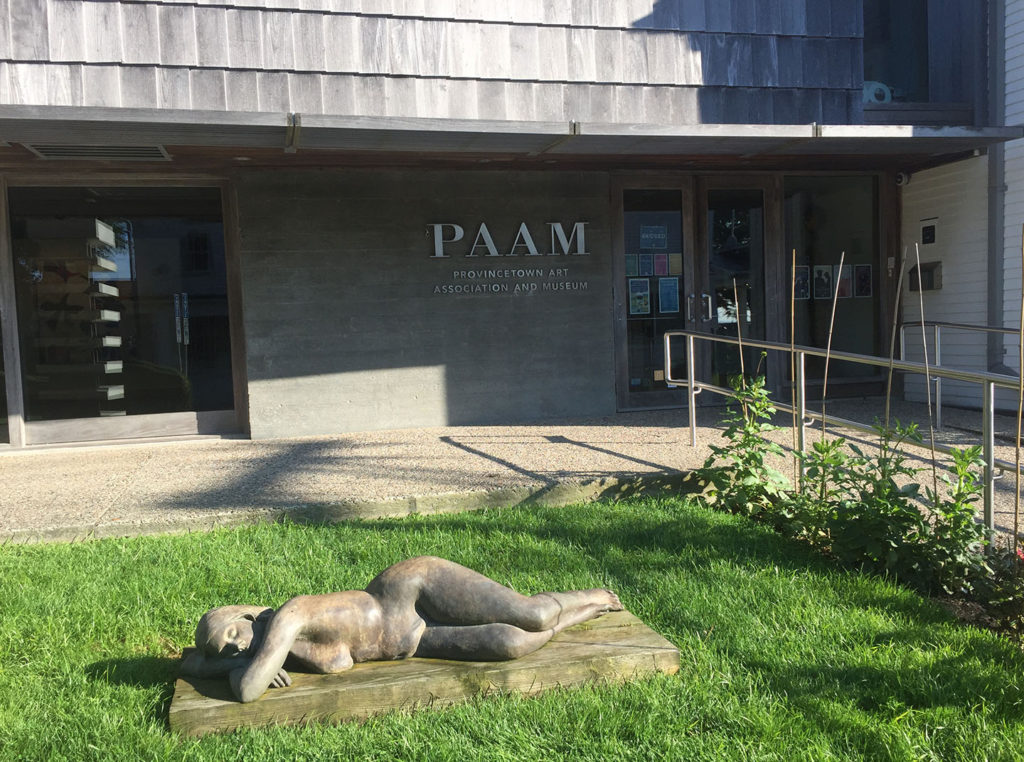
Filmmaker and writer John Waters has been coming to P-town for more than 55 years, and he is still spotted on the streets of town. Waters wrote the screenplays for many of his early films here, including Pink Flamingoes (1972) and Female Trouble (1974). Stories about the good old days in town (with pals like Divine and others) abound.

“People always say that P-town is different. I think it’s always exactly the same. Many of those shops have been there for 25 years. They must make a lot of money. I think sometimes that if I dropped a Kleenex in 1965 it’s still there…”
John Waters, John Waters Interviews (edited by James Egan), 2011
Waters believes that while much of the town is still the same, there is also room to kvetch— about trolley tour buses that are “too wide for our little streets,” the ugliness of the Pilgrim monument, and the large population of dogs who are not familiar to the word “Heel!” But he can never quite overcome his strong ties to P-town and “the peculiar, inscrutable intensity characterizing the love so many people have for the place.” What he sees now reminds him of what he has seen:
“I have a soft spot for the Atlantic house. I always walk by. That’s where Tennessee Williams met his boyfriend. I saw Judy Garland sitting in there drunk. Ella Fitzgerald, Billie Holiday played there. So the little bar in the A-house is really where I bow my head as I walk by.”
John Waters, Interview in Queerty magazine, July 5, 2019
For Waters….and for the countless others who found spiritual, sexual, and artistic freedom there, P-town is a heady mix. For some it is a place to create art, for others a chance to see it; it is both a place to escape society and also to jump into it headfirst. For many it remains a place to breathe the sea air and to find solace: it is Shangri-La.
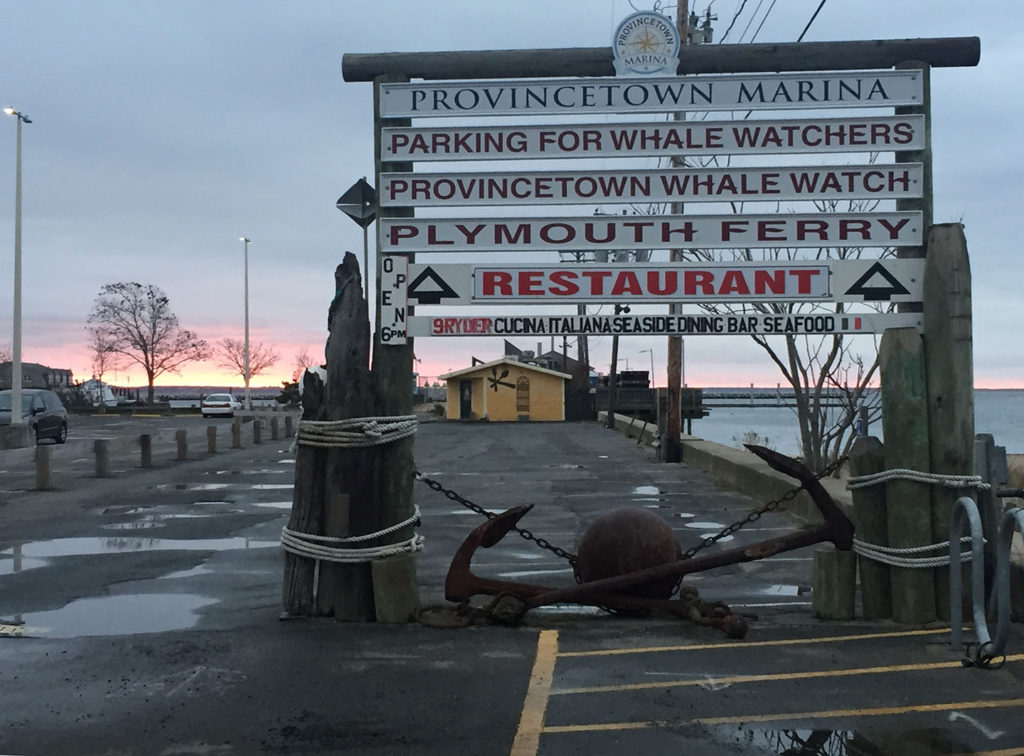

Two websites, lovingly created; http://www.buildingprovincetown2020.com & http://www.provincetownhistoryproject.com, offer a deep view of our history. Much to explore, enjoy!
Thanks so much, Stephen. Will definitely explore!